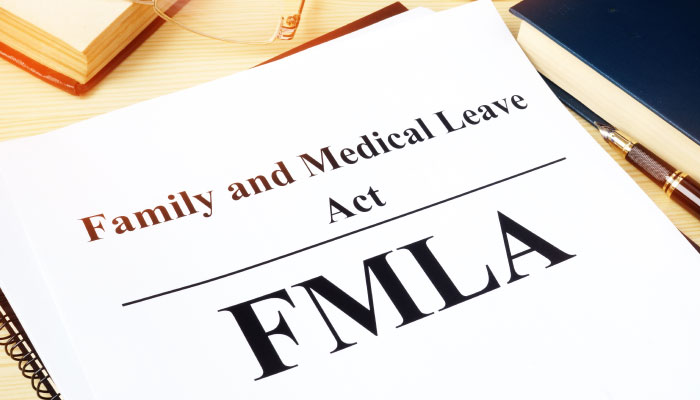Pro Tips: Use the Right Form and Train Managers Early and Often
The Family and Medical Leave Act is 26 -years old, and while this complex law has been around for a while, it’s still no easier to understand or implement.
FMLA: The Basics
The Family and Medical Leave Act (FMLA) is a federal law guaranteeing employees up to 12 weeks of unpaid leave each year without the threat of a job loss, explains FindLaw.
FMLA eligibility extends to all public agencies, including state, federal, and local municipalities, as well as employers with at least 50 employees who worked for at least 20 work weeks either this year or last. It covers workers for any of the previously-mentioned workplaces who have worked for at least 12 months and at least 1,250 hours during that year. The job must take place either at the location where the 50 or more employees work or within 75 miles of it.
Situations covered under the law include any one or more of the following lost work causes:
- A serious medical condition;
- The serious medical condition of an immediate family member;
- Birth and subsequent care of an employee’s child;
- Placement and subsequent care of an adopted or foster child; or
- A call to active duty of the employee’s spouse, child, or parent
How to Implement FMLA at Your Business
For all the law’s benefits, compliance can be tricky, notes the Society for Human Resource Management. Here are some important steps for setting up FMLA at your business so it runs efficiently:
- Develop sound policy: Every company covered by FMLA needs a clear, concise, and current written policy; be sure to address what happens if a person on leave can’t return to work.
- Train managers early and often: That’s right, says SHRM. Managers need training in addition to the HR pros.
- Safeguard against abuse: Closely review medical certifications, and don’t be afraid to ask for clarification on medical facts if things are hazy.
- Terminations can be risky: Although it may be warranted, firing someone on medical leave can open you to liability. As with other employee actions, be sure to document performance.
FMLA Paperwork for 2018
The Department of Labor is required to submit FMLA forms every three years to the Office of Management and Budget for approval and renewal. The most recent tweaks to the program were made in 2015, notes JD Supra author Jeff Nowak. A number of forms expired on May 31; as of June 1, all had been extented to the end of June, as shown in the upper right-hand corner of form WH-384. While you should always be able to access the most up-to-date forms by using (and refreshing) the U.S. Department of Labor’s Wages and Hour Division web portal, keep a close eye on those form expiration dates, Nowak said. You can also check for updates at reginfo.gov.
“Use the current forms,” Nowak said. “They’re good to go, and they almost certainly will go unchanged for another three years.”
Finally, notes benefits consultants ESI Group, keep an eye out this year for additional development around FMLA and the recent tax law changes. There may be a tax credit available.
(This post first appeared in a ProfEd blog)
By Jeff S on 14th June 2018




